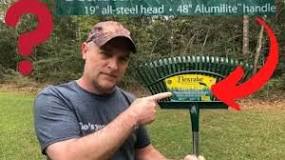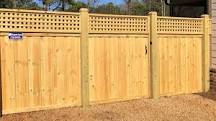So, you’re wondering, how deep does a power rake go? The answer is that a power rake typically penetrates the soil between 1 to 2 inches, depending on the settings and the type of machine being used. This depth is usually enough to effectively remove thatch and aerate the soil without causing too much disruption to the underlying grass roots.
What is a Power Rake?
Before diving deeper, let’s quickly clarify what a power rake is. It’s a piece of equipment designed for lawn care, primarily used to remove thatch—a layer of dead grass, roots, and debris that can suffocate your lawn. It works by using rotating tines that dig into the soil, pulling up this unwanted material.
Why Depth Matters
Understanding how deep a power rake goes is crucial for several reasons:
- Lawn Health: If you go too deep, you might damage the grass roots. This can lead to brown patches or even kill sections of your lawn.
- Soil Aeration: The right depth allows for better aeration, which improves water and nutrient absorption.
- Thatch Removal: A depth of about 1 to 2 inches is generally sufficient to get rid of thatch without overdoing it.
Adjusting Depth Settings
Most power rakes come with adjustable depth settings. Here’s how you can tweak them:
- Shallow Setting: Use this for light thatch or delicate grass types.
- Medium Setting: Ideal for average lawns with moderate thatch buildup.
- Deep Setting: Only for heavy thatch or when preparing soil for new seed.
Tips for Using a Power Rake
- Timing: The best time to use a power rake is in early spring or early fall when your grass is actively growing.
- Moisture Level: A slightly moist lawn works best; too dry can lead to damage, while too wet can make it muddy.
- Follow-Up Care: After raking, consider overseeding and fertilizing to help your lawn recover and thrive.
Summary
In short, a power rake digs into your lawn about 1 to 2 inches deep, which is just right for tackling thatch without harming your grass roots. By adjusting the settings according to your lawn’s needs and following some simple tips, you can keep your grass healthy and lush.
FAQ
How often should I use a power rake?
It really depends on your lawn’s condition. Typically, once or twice a year is sufficient. If you notice thick thatch buildup or poor drainage, you might want to do it more frequently.
Can I use a power rake on all types of grass?
Most grasses can handle it, but some delicate varieties might need special care. Always check what type of grass you have before diving in.
What’s the difference between a power rake and a dethatcher?
Great question! A power rake is more aggressive and digs deeper into the soil compared to a dethatcher, which mainly focuses on removing surface thatch without disturbing the soil as much.
Should I rent or buy a power rake?
If you have a large lawn or plan on using it regularly, buying might be worth it. But if it’s just for occasional use, renting could save you some cash.







